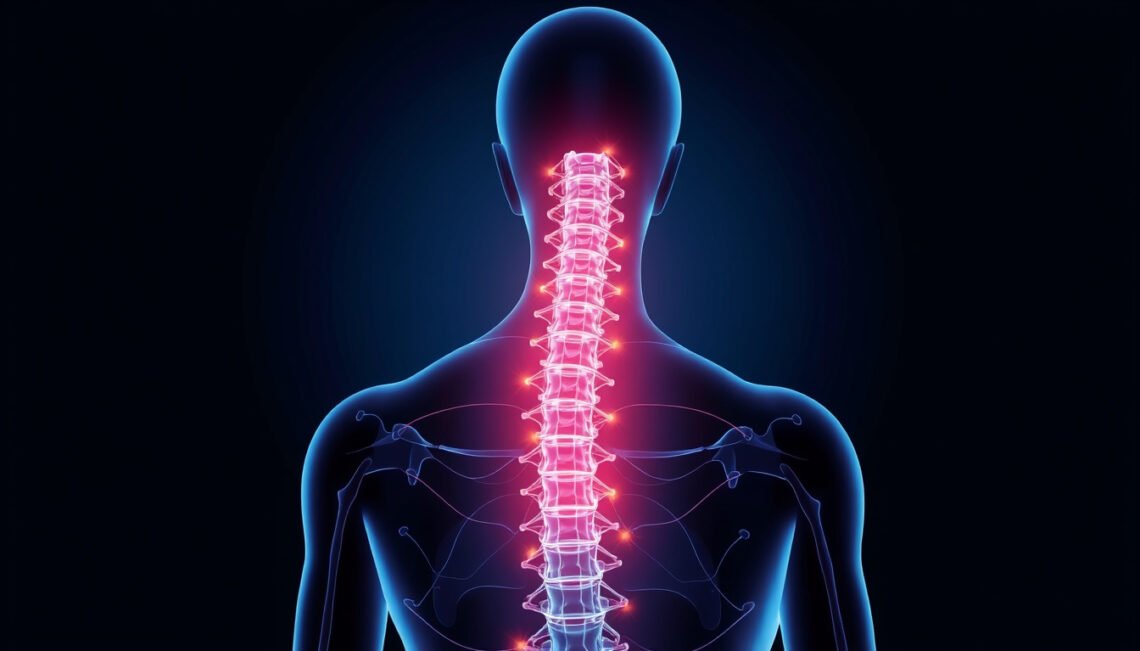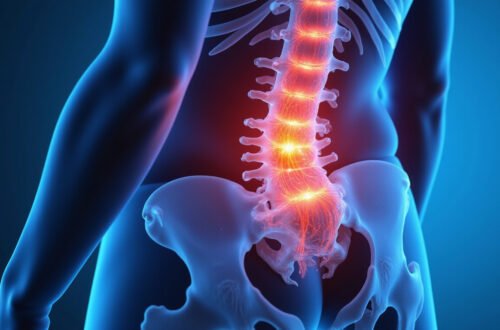Nerve root pain is a common and often debilitating condition that affects millions of people worldwide. This type of pain originates from irritation or compression of the nerve roots as they exit the spinal cord. Understanding the causes, recognizing the symptoms, and exploring effective treatment options are crucial for managing this condition and improving quality of life. In this article, we will delve into the essential aspects of nerve root pain, providing you with the information you need to identify and address this issue effectively.
What is Nerve Root Pain?
Nerve root pain occurs when the nerve roots, which branch off from the spinal cord and extend to different parts of the body, become compressed or inflamed. This can lead to pain, numbness, tingling, or weakness in the areas served by the affected nerve. Since nerve roots are responsible for transmitting signals between the spinal cord and the rest of the body, any disturbance can cause significant discomfort and functional impairment.
Causes of Nerve Root Pain
Several conditions can lead to nerve root pain by putting pressure on or irritating the nerve roots. The most common causes include:
-
Herniated or Bulging Discs
When the soft gel inside spinal discs protrudes through the outer layer, it can compress a nearby nerve root. This is a frequent cause of nerve root pain, particularly in the lower back and neck. -
Spinal Stenosis
This condition involves narrowing of the spinal canal, which can place pressure on the spinal cord and nerve roots. It often develops with age and causes chronic nerve root irritation. -
Bone Spurs (Osteophytes)
As part of the degenerative changes in the spine, bony growths may form and impinge on nerve roots. -
Spinal Injuries
Trauma from accidents or falls can directly damage nerve roots or cause swelling that compresses them. -
Infections and Inflammatory Conditions
Infections like epidural abscess or inflammatory diseases such as rheumatoid arthritis can also cause nerve root irritation. -
Tumors
Though less common, tumors near the spine may press against nerve roots, causing pain.
Symptoms of Nerve Root Pain
The symptoms of nerve root pain can vary depending on the location and severity of the nerve root involvement. Some typical signs include:
- Sharp or Burning Pain — Often radiating from the spine to the limbs following the nerve pathway. For example, sciatica is a type of nerve root pain radiating down the leg.
- Numbness or Tingling — Sensory disturbances in the affected area.
- Muscle Weakness — Reduced strength in muscles innervated by the compressed nerve.
- Reflex Changes — Altered or diminished reflexes corresponding to the affected nerve roots.
- Pain Aggravated by Movement — Activities like bending, coughing, or sneezing may exacerbate the pain.
Diagnosing Nerve Root Pain
A thorough diagnosis is essential to tailor the most effective treatment plan. Diagnosis usually involves:
-
Medical History and Physical Examination
Identifying pain patterns, neurological deficits, and risk factors. -
Imaging Studies
Magnetic Resonance Imaging (MRI) is the gold standard for visualizing soft tissues, including discs and nerves. X-rays and CT scans may also be utilized. -
Nerve Conduction Studies and Electromyography (EMG)
These tests assess the electrical activity of nerves and muscles and can help pinpoint nerve root involvement.
Effective Treatment Options for Nerve Root Pain
The management of nerve root pain depends on the underlying cause and severity of symptoms. Treatment options range from conservative to surgical interventions.
1. Conservative Treatments
Conservative treatments are often the first line of approach and may include:
-
Physical Therapy
Targeted exercises can strengthen supporting muscles, improve flexibility, and reduce nerve irritation. -
Medications
- Nonsteroidal anti-inflammatory drugs (NSAIDs) to reduce inflammation and pain.
- Muscle relaxants to ease muscle spasms.
- Neuropathic agents like gabapentin or pregabalin for nerve-related pain.
-
Epidural Steroid Injections
Corticosteroids injected near the nerve root can decrease inflammation and provide temporary relief. -
Activity Modification
Avoiding movements or activities that exacerbate symptoms.
2. Minimally Invasive Procedures
In cases where conservative management fails, minimally invasive options might be considered:
-
Nerve Root Blocks
Injection of anesthetics and steroids directly around the nerve root. -
Radiofrequency Ablation
Using heat to disrupt nerve conduction and alleviate pain.
3. Surgical Treatment
Surgery may be necessary when there is significant nerve compression causing debilitating pain or neurological deficits. Common procedures include:
-
Discectomy
Removal of herniated disc material pressing on nerves. -
Laminectomy
Removing part of the vertebra to widen the spinal canal. -
Foraminotomy
Enlargement of the nerve root exit passage to relieve compression.
Surgical decisions should be made after careful evaluation by a spine specialist.
Preventing Nerve Root Pain
While some causes of nerve root pain like age-related degeneration are unavoidable, certain measures can reduce the risk or severity:
- Maintaining good posture.
- Regular exercise to strengthen back muscles.
- Avoiding heavy lifting or using proper techniques.
- Managing body weight.
- Quitting smoking, which impairs disc health.
Frequently Asked Questions (FAQs)
What does nerve root pain feel like?
Nerve root pain typically presents as sharp, shooting, or burning pain radiating from the spine into the arms or legs, depending on the affected nerve root. It can also include numbness, tingling, or weakness.
How is nerve root pain diagnosed?
Diagnosis involves a combination of physical examination, medical history assessment, imaging studies like MRI, and sometimes nerve conduction tests such as EMG to confirm nerve root involvement.
Can nerve root pain improve without surgery?
Yes, many cases of nerve root pain improve with conservative treatments like physical therapy, medications, and injections. Surgery is usually reserved for severe or persistent cases.
Conclusion
Nerve root pain can significantly impact daily life, but with proper diagnosis and a comprehensive treatment plan, most individuals find relief and regain function. Understanding the causes, recognizing early symptoms, and exploring the range of available treatments—from conservative care to surgery—empowers patients to make informed decisions about their health.

If you or a loved one is experiencing nerve root pain, don’t wait to seek professional evaluation. Early intervention can prevent worsening symptoms and improve outcomes. Consult with a healthcare provider specializing in spinal disorders to develop a personalized treatment plan tailored to your needs.
For more detailed information, you can explore resources such as the Mayo Clinic’s guide on sciatica and nerve pain symptoms (source).
Take control of your spinal health today and start your journey toward a pain-free, active life!






